#api platform in banking
Explore tagged Tumblr posts
Text
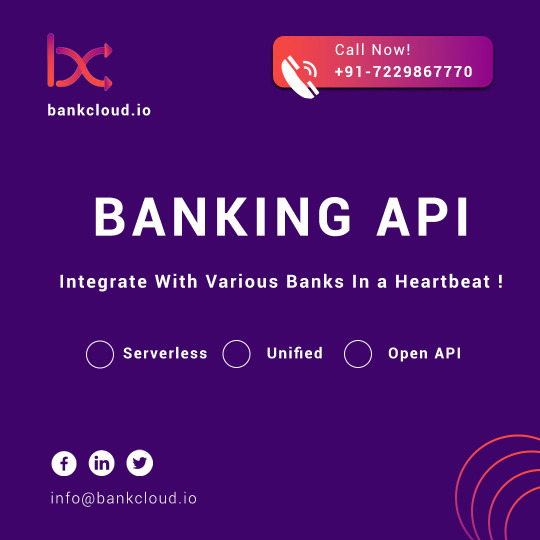
"Elevating Banking with Seamless API Integration"
Banking API Integration is the Seamlessly integrate APIs for efficient operations, exceptional customer experiences, and innovative financial services, propelling the industry to new heights.
#bank api integration#open api banking#api banking platform#api platform in banking#open banking api platform#api based banking#best open banking apis
0 notes
Text
Unframe Emerges from Stealth with $50M to Transform Enterprise AI Deployment
New Post has been published on https://thedigitalinsider.com/unframe-emerges-from-stealth-with-50m-to-transform-enterprise-ai-deployment/
Unframe Emerges from Stealth with $50M to Transform Enterprise AI Deployment


Unframe, a next-generation enterprise AI platform, has officially emerged from stealth with a $50 million funding round led by Bessemer Venture Partners, alongside TLV Partners, Craft Ventures, Third Point Ventures, SentinelOne Ventures, and Cerca Partners. The funding marks a significant milestone for Unframe as it accelerates global expansion, fuels R&D, and scales delivery of its turnkey AI solutions that are already gaining traction with leading enterprises around the world.
Unframe is redefining how large organizations implement artificial intelligence by eliminating the usual friction—long development cycles, security bottlenecks, and the need for in-house AI expertise. Its platform enables enterprises to go from concept to fully deployed, custom AI solution in hours, not months. Unlike generic AI tools or narrowly focused point solutions, Unframe is built to adapt to any enterprise use case across any system or department.
Instant AI Solutions Without the Overhead
At the heart of Unframe’s platform is what it calls the Blueprint Approach, a methodology that provides the necessary context to large language models (LLMs) to deliver hyper-relevant, domain-specific outcomes. This means enterprises don’t need to train or fine-tune models, which is traditionally one of the most resource-intensive parts of deploying AI. Unframe is also LLM-agnostic, allowing customers to use or switch between public and private models without being locked into a single ecosystem.
From parsing chaotic data across legacy systems to analyzing structured and unstructured data with precision, Unframe’s AI agents function like domain experts that can integrate with any system, automate complex workflows, and offer actionable insights—all using natural language inputs.
A New Model for Enterprise AI: Secure, Fast, and Flexible
Enterprise adoption of AI has often been hindered by concerns over security, compliance, and implementation overhead. Unframe is turning this challenge into a competitive advantage. The platform allows for full integration with SaaS tools, APIs, databases, and proprietary file systems—while ensuring that customer data never leaves their secure perimeter unless explicitly allowed. Flexible deployment options include on-premise and public cloud, providing organizations with maximum control over data handling and regulatory compliance.
Unframe also introduces a radical shift in how AI services are priced and delivered. The company operates on an outcome-based pricing model: customers only pay once a solution is deployed and delivering value. This removes the risk typically associated with enterprise software procurement and accelerates time-to-value.
Rapid Traction and Real-World Impact
Despite only recently emerging from stealth, Unframe is already serving dozens of Fortune 500 clients and has achieved millions in annual recurring revenue (ARR). Its early success underscores a growing enterprise need for more agile and effective AI solutions.
“Unframe’s unmatched accuracy, speed, and quality in processing structured and unstructured data have transformed our operations,” said the CIO of a global investment bank.
“At Cushman & Wakefield, our AI+ strategy is focused on bringing fast-paced and innovative solutions to unlock critical insights, and we are aggressively pushing forward with Unframe,” added Salumeh Companieh, Chief Digital & Information Officer.
“Thanks to Unframe, we brought our AI use case to life in just two weeks—something our team had been struggling with for nine months,” said a VP of Innovation at a Fortune 100 insurance company.
A Seasoned Team with a Proven Track Record
Unframe is led by CEO and co-founder Shay Levi, who previously co-founded Noname Security, scaling it to $40M ARR and a $500M acquisition by Akamai. He’s joined by COO Larissa Schneider and VP of R&D Adi Azarya, both veterans in scaling enterprise software through IPOs, M&A, and international expansion. The leadership team’s deep expertise in cybersecurity, product development, and operational scaling is foundational to Unframe’s rapid growth and enterprise-grade offering.
“Unframe is flipping enterprise AI on its head by quickly providing customized software based on an enterprise’s exact needs,” said Amit Karp, Partner at Bessemer Venture Partners. “I have the utmost confidence in Shay and the team to redefine how software is built and delivered to the enterprise world.”
Why It Matters
In an environment where AI adoption is imperative but often complex, Unframe offers a bold alternative. By removing technical hurdles, compliance friction, and vendor lock-in, Unframe empowers enterprises to move faster, act smarter, and unlock the full potential of their data—securely and on their own terms.
With a unified platform that supports unlimited integrations, real-time collaboration, and autonomous task execution, Unframe is positioning itself as the central nervous system for enterprise AI.
This funding round not only affirms market confidence in Unframe’s mission but signals a broader shift in enterprise expectations: from slow, one-size-fits-all solutions to agile, secure, and completely customizable AI that delivers value from day one.
#acquisition#adoption#agents#agile#ai#AI adoption#AI AGENTS#ai platform#ai tools#akamai#amp#APIs#approach#artificial#Artificial Intelligence#autonomous#bank#blueprint#CEO#challenge#cio#Cloud#Collaboration#compliance#craft#customer data#cybersecurity#data#databases#deploying
1 note
·
View note
Text
Explore the best developer friendly API platforms designed to streamline integration, foster innovation, and accelerate development for seamless user experiences.
Developer Friendly Api Platform
#Developer Friendly Api Platform#Consumer Driven Banking#Competitive Market Advantage Through Data#Banking Data Aggregation Services#Advanced Security Architecture#Adr Open Banking#Accredited Data Recipient
0 notes
Text
#video kyc solution providers#video kyc platform#video kyc providers#video kyc services#KYC UK#kyc solution#kyc api#fintech#banks#finance#kyc companies#banking
1 note
·
View note
Text
0 notes
Text
Empowering Consumers with API-Driven Banking: Enhancing Customer Experiences

The FinTech ecosystem is dynamic at its best, and in the high-octane banking landscape, API-powered innovations are emerging as a transformative force. The modern consumer has become more aware than ever, and APIs are revolutionizing how consumers manage their finances and interact with financial institutions. Read more info. please visit here - https://sites.google.com/view/api-driven-banking/
0 notes
Text
#kyc canada#kyc providers#kyc solution#kyc api#kyc software#fintech#kyc platform#healthcare#insurance#kyc verification#KYC Solutions for Canada#business#finance#banks#blockchain#crypto
1 note
·
View note
Text
2024 team sponsors recap!
this is completely irrelevant to F1 but i study and do these stuffs for a living sooo 😩😩 2023 sponsors are based on the sponsors that are there at the beginning of the season (new sponsors that join in the middle of the season will be classified as 2024's)
Mercedes AMG Petronas F1 Team:
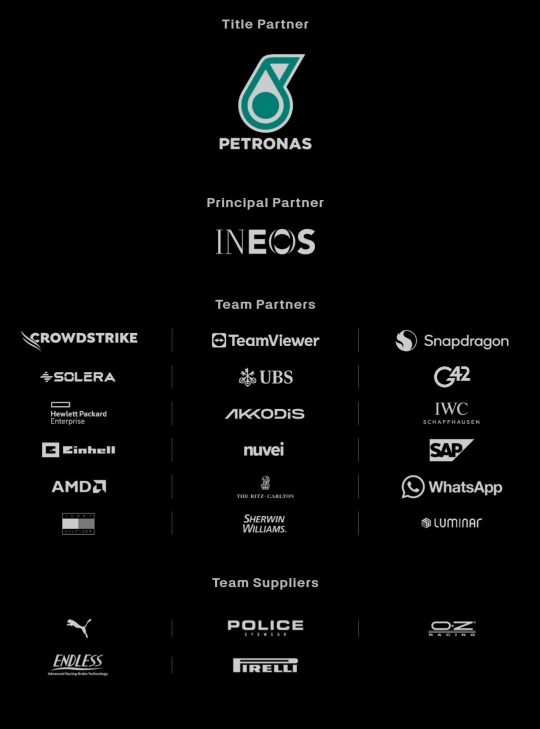
New sponsors: Whatsapp, Luminar (American tech company), SAP (German software company), nuvei (Canadian credit card services), Sherwin Williams (American painting company) 2024 data last update: 2024/02/14
Old sponsors that left: Monster Energy, Pure Storage (American technology company), fastly (American cloud computing services), Axalta (American painting company), Eight sleep (American mattresses company) 2023 data last update: 2023/01/07
Oracle Red Bull Racing F1 Team:
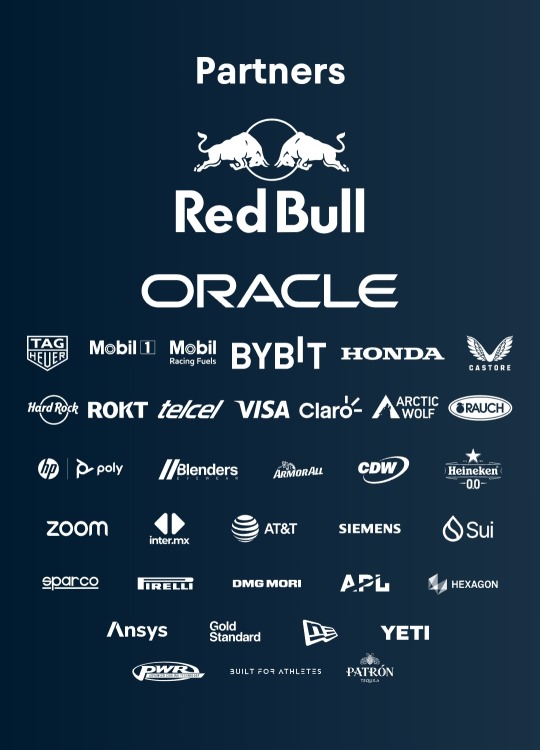
New sponsors: Yeti (American cooler manufacturer, joined later in 2023), APL (American footwear/athletic apparel manufacturer, joined later in 2023), CDW (American IT company, joined later in 2023), Sui (American tech app by Mysten Labs, joined later in 2023), Patron Tequila (Mexican alcoholic beverages company, joined later in 2023) 2024 data last update: 2024/02/15
Old sponsors that left: CashApp, Walmart, Therabody (American wellness technology company), Ocean Bottle (Norwegian reusable bottle manufacturer), PokerStars (Costa Rican gambling site), Alpha Tauri (? no info if they're official partners or not but Austrian clothing company made by Red Bull), BMC (Switzerland bicycle/cycling manufacturer), Esso (American fuel company, subsidiary of ExxonMobil), Hewlett Packard Enterprise (American technology company) 2023 data last update: 2023/03/07
More: Esso is a subsidiary of Mobil so there's possibility they merged or something
Scuderia Ferrari:
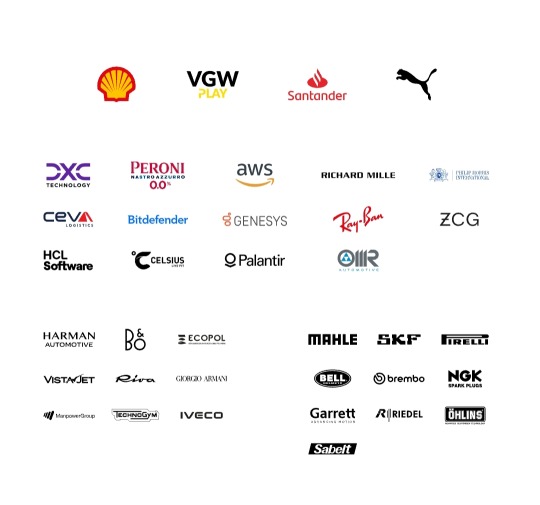
New sponsors: VGW Play (Australian tech game company, joined later in 2023), DXC Technology (American IT company, joined later in 2023), Peroni (Italian brewing company), Z Capital Group/ZCG (American private asset management/merchant bank company), Celsius (Swedish energy drink manufacturer) 2024 data last update: 2024/02/15
Old sponsors that left: Mission Winnow (American content lab by Phillip Morris International aka Marlboro), Estrella Garcia (Spanish alcoholic beverages manufacturer), Frecciarossa (Italian high speed train company) 2023 data last update: 2023/02/16
More: Mission Winnow is a part of Phillip Morris International. They are no longer listed as team sponsor but PMI is listed instead.
(starting here, 2023 data last update is 2023/02/23 and 2024 data last update is 2024/02/15)
McLaren F1 Team: (Only McLaren RACING's data is available idk if some of these are XE/FE team partners but anw..)
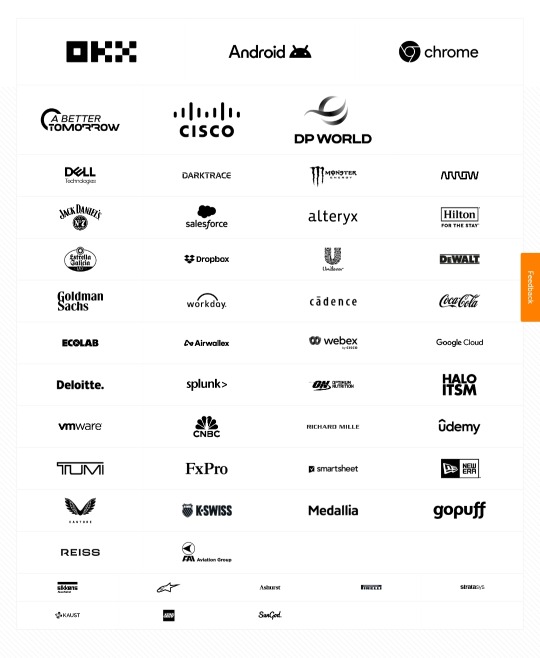
New sponsors: Monster Energy, Salesforce (American cloud based software company, joined later in 2023), Estrella Garcia (Spanish alcoholic beverages manufacturer), Dropbox (American file hosting company), Workday (American system software company, joined later in 2023), Ecolab (American water purification/hygiene company), Airwallex (Australian financial tech company), Optimum Nutrition (American nutritional supplement manufacturer), Halo ITSM (American software company, joined later in 2023), Udemy (American educational tech company, joined later in 2023), New Era (American cap manufacturer, joined in 2023), K-Swiss (American shoes manufacturer, joined later in 2023), Alpinestars (Italian motorsports safety equipment manufacturer)
Old sponsors that left: DP World (Emirati logistics company), EasyPost (American shipping API company), Immersive Labs (UK cybersecurity training company?), Logitech, Mind (UK mental health charity), PartyCasino (UK? online casino site), PartyPoker (American? gambling site), Sparco (Italian auto part & accessory manufacturer), Tezos (Switzerland crypto company)
Aston Martin Aramco F1 Team:
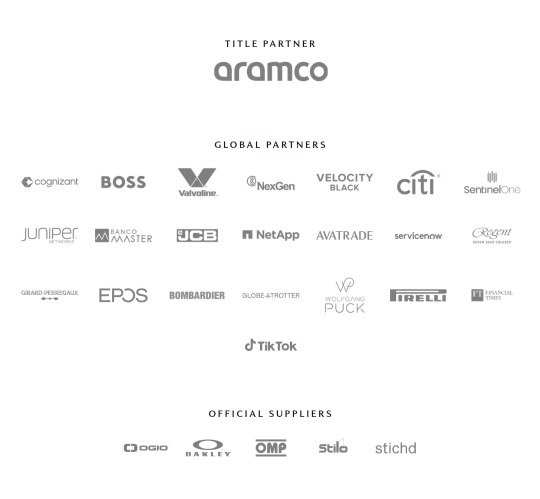
New sponsors: Valvoline (American retail automotives service company, joined later in 2023), NexGen (Canadian sustainable? fuel company), Banco Master (Brazilian digital banking platform, joined later in 2023), ServiceNow (American software company, joined later in 2023), Regent Seven Seas Cruise, Wolfgang Puck (Austrian-American chef and restaurant owner, joined later in 2023), Financial Times (British business newspaper), OMP (Italian racing safety equipment manufacturer), stichd (Netherlands fashion & apparel manufacturer)
Old sponsors that left: Alpinestars (Italian motorsports safety equipment manufacturer), crypto.com (Singaporean cryptocurrency company), ebb3 (UK? software company), Pelmark (UK fashion and apparel manufacturer), Peroni (Italian brewing company), Porto Seguro (Brazilian insurance company), Socios (Malta's blockchain-based platform), XP (Brazilian investment company)
Stake F1 Team (prev. Alfa Romeo):
???? Can't found their website (might be geoblocked in my country???)
BWT Alpine F1 Team:
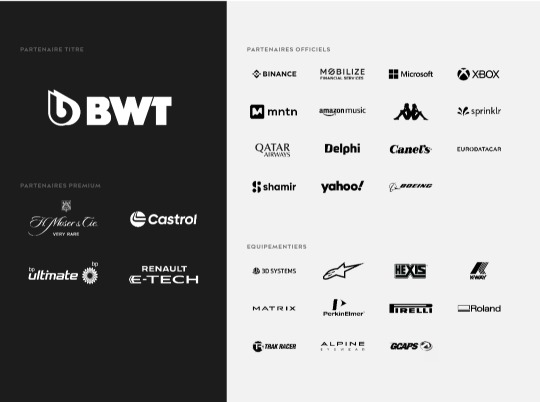
New sponsors: MNTN (American software company), H. Moser & Cie (Switzerland watch manufacturer), Amazon Music
Old sponsors that left: Bell & Ross (French watch company), Ecowatt (??? afaik French less-energy smthn smthn company), Elysium (French? American? Software company), KX (UK software company), Plug (American electrical equipment manufacturing company)
Visa CashApp RB F1 Team (prev. Scuderia Alpha Tauri):
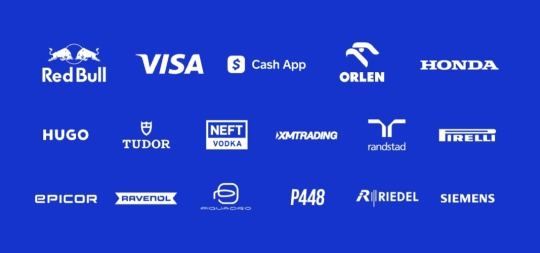
New Sponsors: Visa, CashApp, Hugo Boss, Tudor, Neft Vodka (Austrian alcoholic beverages company), Piquadro (Italian luxury bag manufacturer)
Old sponsors that left: Buzz (?), Carl Friedrik (UK travel goods manufacturer), Flex Box (Hongkong? shipping containers manufacturer), GMG (Emirati global wellbeing company), RapidAPI (American API company)
Haas F1 Team:
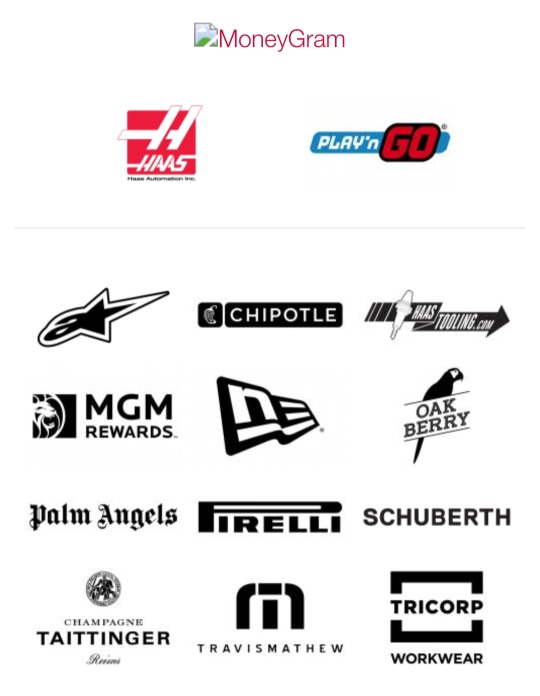
New sponsors: New Era (American cap manufacturer, joined later in 2023)
Old sponsors that left: Hantec Markets (Hongkong capital markets company), OpenSea (American NFT/Crypto company)
Williams Racing:

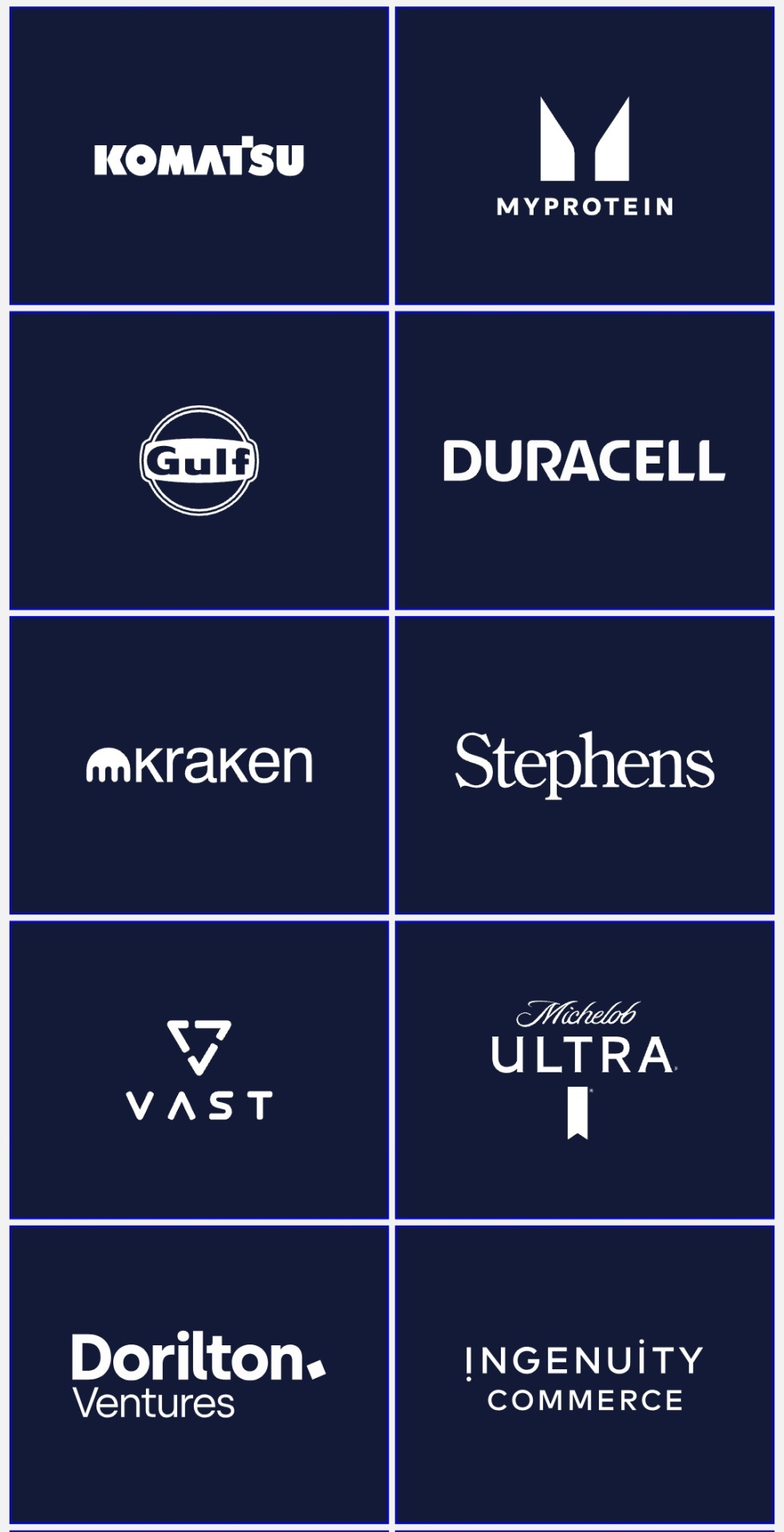
New sponsors: Komatsu, MyProtein (British bodybuilding supplement), Kraken (American crypto company, joined later in 2023), VAST Data (American tech company), Ingenuity Commerce (UK e-commerce platform), Puma (joined later in 2023)
Old sponsors that left: Acronis (Swiss software company), Bremont (British watch manufacturer), Dtex Systems (American? cybersecurity company), Financial Times (British business newspaper), Jumeirah Hotels & Resorts, KX (UK software company), OMP (Italian racing safety equipment manufacturer), PPG (American painting manufacturer), Umbro (English sports equipment manufacturer), Zeiss (German opticals/optometrics manufacturing company)
#mercedes amg petronas#red bull racing#scuderia ferrari#visa cash app rb#haas f1 team#mclaren f1#aston martin#alpine f1#williams racing#stake f1 team#f1#ari's rant#sponsor talks
42 notes
·
View notes
Text
How to Develop a P2P Crypto Exchange and How Much Does It Cost?
With the rise of cryptocurrencies, Peer-to-Peer (P2P) crypto exchanges have become a popular choice for users who want to trade digital assets directly with others. These decentralized platforms offer a more secure, private, and cost-effective way to buy and sell cryptocurrencies. If you’re considering building your own P2P crypto exchange, this blog will guide you through the development process and give you an idea of how much it costs to create such a platform.
What is a P2P Crypto Exchange?
A P2P crypto exchange is a decentralized platform that allows users to buy and sell cryptocurrencies directly with each other without relying on a central authority. These exchanges connect buyers and sellers through listings, and transactions are often protected by escrow services to ensure fairness and security. P2P exchanges typically offer lower fees, more privacy, and a variety of payment methods, making them an attractive alternative to traditional centralized exchanges.
Steps to Develop a P2P Crypto Exchange
Developing a P2P crypto exchange involves several key steps. Here’s a breakdown of the process:
1. Define Your Business Model
Before starting the development, it’s important to define the business model of your P2P exchange. You’ll need to decide on key factors like:
Currency Support: Which cryptocurrencies will your exchange support (e.g., Bitcoin, Ethereum, stablecoins)?
Payment Methods: What types of payment methods will be allowed (bank transfer, PayPal, cash, etc.)?
Fees: Will you charge a flat fee per transaction, a percentage-based fee, or a combination of both?
User Verification: Will your platform require Know-Your-Customer (KYC) verification?
2. Choose the Right Technology Stack
Building a P2P crypto exchange requires selecting the right technology stack. The key components include:
Backend Development: You'll need a backend to handle user registrations, transaction processing, security protocols, and matching buy/sell orders. Technologies like Node.js, Ruby on Rails, or Django are commonly used.
Frontend Development: The user interface (UI) must be intuitive, secure, and responsive. HTML, CSS, JavaScript, and React or Angular are popular choices for frontend development.
Blockchain Integration: Integrating blockchain technology to support cryptocurrency transactions is essential. This could involve setting up APIs for blockchain interaction or using open-source solutions like Ethereum or Binance Smart Chain (BSC).
Escrow System: An escrow system is crucial to protect both buyers and sellers during transactions. This involves coding or integrating a reliable escrow service that holds cryptocurrency until both parties confirm the transaction.
3. Develop Core Features
Key features to develop for your P2P exchange include:
User Registration and Authentication: Secure login options such as two-factor authentication (2FA) and multi-signature wallets.
Matching Engine: This feature matches buyers and sellers based on their criteria (e.g., price, payment method).
Escrow System: An escrow mechanism holds funds in a secure wallet until both parties confirm the transaction is complete.
Payment Gateway Integration: You’ll need to integrate payment gateways for fiat transactions (e.g., bank transfers, PayPal).
Dispute Resolution System: Provide a system where users can report issues, and a support team or automated process can resolve disputes.
Reputation System: Implement a feedback system where users can rate each other based on their transaction experience.
4. Security Measures
Security is critical when building any crypto exchange. Some essential security features include:
End-to-End Encryption: Ensure all user data and transactions are encrypted to protect sensitive information.
Cold Storage for Funds: Store the majority of the platform's cryptocurrency holdings in cold wallets to protect them from hacking attempts.
Anti-Fraud Measures: Implement mechanisms to detect fraudulent activity, such as IP tracking, behavior analysis, and AI-powered fraud detection.
Regulatory Compliance: Ensure your platform complies with global regulatory requirements like KYC and AML (Anti-Money Laundering) protocols.
5. Testing and Launch
After developing the platform, it’s essential to test it thoroughly. Perform both manual and automated testing to ensure all features are functioning properly, the platform is secure, and there are no vulnerabilities. This includes:
Unit testing
Load testing
Penetration testing
User acceptance testing (UAT)
Once testing is complete, you can launch the platform.
How Much Does It Cost to Develop a P2P Crypto Exchange?
The cost of developing a P2P crypto exchange depends on several factors, including the complexity of the platform, the technology stack, and the development team you hire. Here’s a general cost breakdown:
1. Development Team Cost
You can either hire an in-house development team or outsource the project to a blockchain development company. Here’s an estimated cost for each:
In-house Team: Hiring in-house developers can be more expensive, with costs ranging from $50,000 to $150,000+ per developer annually, depending on location.
Outsourcing: Outsourcing to a specialized blockchain development company can be more cost-effective, with prices ranging from $30,000 to $100,000 for a full-fledged P2P exchange platform, depending on the complexity and features.
2. Platform Design and UI/UX
The design of the platform is crucial for user experience and security. Professional UI/UX design can cost anywhere from $5,000 to $20,000 depending on the design complexity and features.
3. Blockchain Integration
Integrating blockchain networks (like Bitcoin, Ethereum, Binance Smart Chain, etc.) can be costly, with development costs ranging from $10,000 to $30,000 or more, depending on the blockchain chosen and the integration complexity.
4. Security and Compliance
Security is a critical component for a P2P exchange. Security audits, KYC/AML implementation, and regulatory compliance measures can add $10,000 to $50,000 to the total development cost.
5. Maintenance and Updates
Post-launch maintenance and updates (bug fixes, feature enhancements, etc.) typically cost about 15-20% of the initial development cost annually.
Total Estimated Cost
Basic Platform: $30,000 to $50,000
Advanced Platform: $70,000 to $150,000+
Conclusion
Developing a P2P crypto exchange requires careful planning, secure development, and a focus on providing a seamless user experience. The cost of developing a P2P exchange varies depending on factors like platform complexity, team, and security measures, but on average, it can range from $30,000 to $150,000+.
If you're looking to launch your own P2P crypto exchange, it's essential to partner with a reliable blockchain development company to ensure the project’s success and long-term sustainability. By focusing on security, user experience, and regulatory compliance, you can create a platform that meets the growing demand for decentralized crypto trading.
Feel free to adjust or expand on specific details to better suit your target audience!
2 notes
·
View notes
Text
Best Payment Gateway In India– Quick Pay
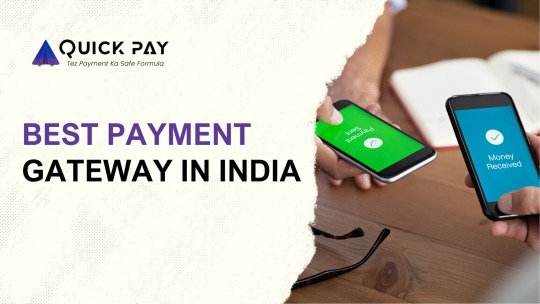
In today's digital era, businesses of all sizes need a reliable, secure, and efficient payment gateway to process online transactions. Whether you're running an e-commerce store, a subscription-based service, or a brick-and-mortar shop expanding to digital payments, choosing the right payment gateway can significantly impact your success. Among the many options available, Quick Pay has emerged as one of the best payment gateways in the industry.
This article explores the features, benefits, security measures, and why Quick Pay is the preferred choice for businesses worldwide.
What is Quick Pay?
Quick Pay is a cutting-edge payment gateway solution that facilitates seamless online transactions between merchants and customers. It offers a secure and user-friendly interface, allowing businesses to accept payments via credit cards, debit cards, mobile wallets, and bank transfers. Quick Pay supports multiple currencies and integrates with various e-commerce platforms, making it a versatile choice for businesses operating locally and globally.
Key Features of Quick Pay
1. Multi-Channel Payment Support
One of the standout features of Quick Pay is its ability to support multiple payment channels, including:
Credit and debit card processing (Visa, Mastercard, American Express, etc.)
Mobile wallets (Apple Pay, Google Pay, PayPal, etc.)
Bank transfers and direct debit
QR code payments
Buy Now, Pay Later (BNPL) services
This flexibility ensures that businesses can cater to customers' diverse payment preferences, thereby enhancing the checkout experience and improving sales conversion rates.
2. Seamless Integration
Quick Pay offers seamless integration with major e-commerce platforms like Shopify, WooCommerce, Magento, and BigCommerce. Additionally, it provides APIs and plugins that allow businesses to customize payment processing according to their specific needs. Developers can easily integrate Quick Pay into their websites and mobile applications without extensive coding knowledge.
3. High-Level Security & Fraud Prevention
Security is a top priority for any payment gateway, and Quick Pay excels in this area with:
PCI DSS compliance (Payment Card Industry Data Security Standard)
Advanced encryption technology to protect sensitive data
AI-driven fraud detection and prevention mechanisms
3D Secure authentication for an extra layer of security
By implementing these security measures, Quick Pay minimizes fraudulent transactions and enhances customer trust.
4. Fast and Reliable Transactions
Speed and reliability are crucial in online payments. Quick Pay ensures that transactions are processed swiftly with minimal downtime. It supports instant payment processing, reducing wait times for merchants and customers alike. Businesses can also benefit from automated settlement features that streamline fund transfers to their bank accounts.
5. Competitive Pricing & Transparent Fees
Unlike many payment gateways that have hidden charges, Quick Pay provides transparent pricing models. It offers:
No setup fees
Low transaction fees with volume-based discounts
No hidden maintenance or withdrawal charges
Custom pricing plans for high-volume merchants
This cost-effective approach makes Quick Pay a preferred choice for startups and large enterprises alike.
6. Recurring Payments & Subscription Billing
For businesses offering subscription-based services, Quick Pay provides a robust recurring payment system. It automates billing cycles, reducing manual efforts while ensuring timely payments. Customers can set up autopay, making it convenient for them and improving customer retention rates for businesses.
7. Multi-Currency & Global Payment Support
In an increasingly globalized economy, accepting international payments is vital. Quick Pay supports transactions in multiple currencies and offers dynamic currency conversion. This allows businesses to cater to international customers without dealing with complex exchange rate issues.
Benefits of Using Quick Pay
1. Enhanced Customer Experience
Quick Pay ensures a smooth checkout experience by providing multiple payment options and a user-friendly interface. Faster payment processing reduces cart abandonment and boosts customer satisfaction.
2. Improved Business Efficiency
With automated invoicing, seamless integration, and real-time transaction tracking, businesses can streamline their payment operations, saving time and resources.
3. Higher Security & Reduced Fraud Risk
With its state-of-the-art security measures, Quick Pay minimizes risks associated with fraud and data breaches. This enhances business credibility and customer trust.
4. Increased Sales & Revenue
Supporting multiple payment options and international transactions helps businesses tap into a broader customer base, leading to higher sales and revenue growth.
How to Set Up Quick Pay for Your Business?
Setting up Quick Pay is a straightforward process:
Sign Up – Visit the Quick Pay website and create an account.
Verify Business Details – Submit the required business documents for verification.
Integrate Quick Pay – Use APIs, plugins, or custom scripts to integrate Quick Pay into your website or app.
Configure Payment Options – Select the preferred payment methods you want to offer customers.
Go Live – Once approved, start accepting payments seamlessly.
Why Quick Pay Stands Out Among Competitors
While several payment gateways exist, Quick Pay differentiates itself with:
Superior security measures compared to standard gateways.
Faster payouts than many competitors, ensuring businesses receive funds quicker.
Customer-friendly interface making it easier for both merchants and users.
Scalability, accommodating businesses from small startups to large enterprises.
Conclusion
Quick Pay is undoubtedly one of the best payment gateway in India available today. Its blend of security, efficiency, affordability, and ease of use makes it an ideal choice for businesses across various industries. Whether you run an e-commerce store, a SaaS business, or a global enterprise, Quick Pay ensures smooth, secure, and hassle-free payment processing.
By choosing Quick Pay, businesses can enhance customer experience, reduce fraud risks, and boost revenue. With seamless integration, multi-currency support, and advanced features, Quick Pay is the go-to payment gateway for modern businesses looking for a reliable and future-proof payment solution.
Are you ready to streamline your payments and take your business to the next level? Sign up for Quick Pay today!
2 notes
·
View notes
Text
Blockchain Payments: The Game Changer in the Finance Industry
The finance industry has experienced a remarkable transformation over the past few years, with blockchain payments emerging as one of the most groundbreaking innovations. As businesses and individuals increasingly seek secure, transparent, and efficient transaction methods, blockchain technology has positioned itself as a powerful solution that challenges traditional payment systems.
Understanding Blockchain Payments
At its core, blockchain payments utilize decentralized ledger technology (DLT) to facilitate transactions without intermediaries such as banks. Unlike conventional payment systems, which rely on centralized institutions, blockchain operates through a distributed network of nodes that validate and record transactions in an immutable ledger. This decentralized approach ensures greater transparency, security, and efficiency in financial transactions.
Key Benefits of Blockchain Payments
1. Security and Transparency
Blockchain transactions are encrypted and recorded on an immutable ledger, making them highly secure and tamper-proof. The decentralized nature of blockchain ensures that no single entity can alter transaction records, increasing transparency and reducing the risk of fraud.
2. Lower Transaction Costs
Traditional payment methods often involve intermediaries such as banks and payment processors, which charge significant fees for transaction processing. Blockchain payments eliminate the need for intermediaries, resulting in lower transaction costs for businesses and consumers.
3. Faster Cross-Border Transactions
International transactions using traditional banking systems can take days to settle due to multiple intermediaries and regulatory approvals. Blockchain payments, on the other hand, enable near-instant cross-border transactions, enhancing financial inclusivity and reducing delays.
4. Enhanced Accessibility
Blockchain payments provide financial services to individuals and businesses without requiring a traditional bank account. This feature is particularly beneficial for underbanked populations, allowing them to participate in the global economy.

Real-World Applications of Blockchain Payments
E-Commerce and Retail: Merchants are integrating blockchain payment systems to accept cryptocurrencies, offering customers an alternative and secure payment method.
Remittances: Migrant workers can send money to their families without high remittance fees, ensuring more money reaches the recipients.
Supply Chain Management: Blockchain ensures secure and transparent payments between suppliers, manufacturers, and distributors.
Decentralized Finance (DeFi): DeFi platforms leverage blockchain payments for lending, borrowing, and yield farming, providing users with financial services without traditional banks.
How Resmic is Revolutionizing Blockchain Payments?
Resmic is at the forefront of enabling seamless cryptocurrency transactions, empowering businesses to embrace blockchain payments effortlessly. The platform provides a secure and user-friendly payment infrastructure, allowing businesses to accept multiple cryptocurrencies while ensuring compliance with regulatory requirements.
Key Features of Resmic:
Multi-Currency Support: Accepts various cryptocurrencies, enhancing customer flexibility.
Fast Settlements: Near-instant transactions for efficient cash flow management.
Secure Transactions: Robust encryption and decentralized validation for enhanced security.
Seamless Integration: Easy API integration with existing payment systems and e-commerce platforms.
Embracing the Future of Finance
Blockchain payments are reshaping the financial landscape, offering businesses and individuals a more efficient and secure way to transfer value globally. As adoption continues to grow, platforms like Resmic play a crucial role in facilitating this transition. By leveraging blockchain technology, businesses can stay ahead of the curve and unlock new opportunities in the digital economy.
3 notes
·
View notes
Text
What Are the Key Factors to Consider When Choosing a Payment Solution Provider?

The rapid growth of digital transactions has made choosing the right payment solution provider a crucial decision for businesses. Whether you operate an e-commerce store, a subscription-based service, or a financial institution, selecting the right provider ensures secure and efficient payment processing. With the increasing demand for fintech payment solutions, businesses must evaluate providers based on security, compatibility, scalability, and cost-effectiveness.
1. Security and Compliance
Security is the top priority when selecting a payment solution provider. Since financial transactions involve sensitive customer data, businesses must ensure that their provider follows strict security protocols. Look for providers that comply with PCI DSS (Payment Card Industry Data Security Standard) and offer encryption, tokenization, and fraud prevention measures.
A reputable provider should also offer real-time fraud detection and risk management tools to safeguard transactions. Compliance with regional regulations such as GDPR, CCPA, or PSD2 is also crucial for businesses operating in multiple locations.
2. Integration and Compatibility
Seamless Payment gateway integration is essential for a smooth transaction experience. Businesses should assess whether the provider’s APIs and SDKs are compatible with their existing platforms, including websites, mobile apps, and POS systems. A well-documented API enables easy customization and enhances the overall customer experience.
Additionally, businesses should consider whether the provider supports multiple payment methods such as credit cards, digital wallets, cryptocurrencies, and bank transfers. The ability to integrate with accounting, CRM, and ERP software is also beneficial for streamlining financial operations.
3. Cost and Pricing Structure
Understanding the pricing structure of payment solution providers is crucial for managing operational costs. Different providers offer various pricing models, including:
Flat-rate pricing – A fixed percentage per transaction
Interchange-plus pricing – A combination of network fees and provider markup
Subscription-based pricing – A fixed monthly fee with lower transaction costs
Businesses should evaluate setup fees, transaction fees, chargeback fees, and any hidden costs that may impact profitability. Opting for a transparent pricing model ensures cost-effectiveness in the long run.
4. Scalability and Performance
As businesses grow, their payment processing needs will evolve. Choosing a provider that offers scalable fintech payment solutions ensures seamless expansion into new markets and accommodates higher transaction volumes without downtime or slow processing speeds.
Look for providers with a robust infrastructure that supports high uptime, fast transaction processing, and minimal payment failures. Cloud-based payment solutions often offer better scalability and reliability for growing businesses.
5. Customer Support and Service Reliability
Reliable customer support is essential when dealing with financial transactions. Payment-related issues can result in revenue loss and customer dissatisfaction. Businesses should opt for providers that offer 24/7 customer support via multiple channels such as phone, email, and live chat.
Additionally, a provider with dedicated account management services can offer personalized solutions and proactive issue resolution, ensuring minimal disruptions to business operations.
6. Multi-Currency and Global Payment Support
For businesses targeting international markets, multi-currency support is a key consideration. The ability to accept payments in different currencies and offer localized payment methods enhances customer satisfaction and expands the business’s global reach.
Providers that support cross-border transactions with competitive exchange rates and minimal conversion fees are ideal for businesses operating in multiple countries.
7. Fintech Payment System Compatibility
A modern fintech payment system should be adaptable to emerging financial technologies. Businesses should evaluate whether the provider supports innovations like blockchain payments, real-time payment processing, and artificial intelligence-driven fraud prevention.
The ability to integrate with open banking solutions and provide seamless transaction experiences across various fintech ecosystems is becoming increasingly important in the digital payment landscape.
8. Reputation and Industry Experience
The credibility of a payment solution provider is another critical factor. Researching customer reviews, case studies, and testimonials can provide insights into the provider’s reliability and performance.
Established providers with years of experience and partnerships with reputable financial institutions are more likely to offer stable and secure payment processing services. Collaborations with fintech leaders, such as Xettle Technologies, demonstrate a provider’s commitment to innovation and excellence in payment solutions.
Conclusion
Choosing the right payment solution provider requires careful consideration of security, integration, pricing, scalability, customer support, and industry experience. Businesses must align their choice with long-term growth objectives and ensure that the provider offers secure, seamless, and cost-effective fintech payment solutions.
With the rise of digital transactions, businesses that invest in a robust fintech payment system with seamless payment gateway integration will gain a competitive edge and enhance customer trust. By partnering with reputable payment solution providers, businesses can ensure secure and efficient transaction experiences for their customers while maximizing operational efficiency.
3 notes
·
View notes
Text
Like a venomous puss moth emerging from its hard cocoon, the social network formerly known as Twitter has fully metamorphosed into X.com.
Various elements of Twitter had already embraced the rebranding, and the company has been using X.com links since early April. But now the domain has flipped over entirely, marking the end of a tumultuous transition period—and erasing the last vestiges of the bird app.
“We are letting you know that we are changing our URL, but your privacy and data protection settings remain the same,” reads a message at the bottom of the X login and home pages.
The switchover has been a long time coming. X owner Elon Musk announced the shift from Twitter to X last July, a few months after he officially acquired the company. But the billionaire has for decades harbored a dream of creating an “everything app” by that name, and Twitter is his vessel.
“The Twitter name made sense when it was just 140-character messages going back and forth—like birds tweeting—but now you can post almost anything, including several hours of video,” Musk wrote on the newly redubbed X last summer. “In the months to come, we will add comprehensive communications and the ability to conduct your entire financial world. The Twitter name does not make sense in that context, so we must bid adieu to the bird.”
Twitter under Musk has indeed added video and voice calls to its roster of features. It has also replatformed conspiracy theorists like Alex Jones, fostered a welcoming environment for porn spam accounts, made an absolute hash out of verification, introduced a monetization system that encourages rampant engagement farming, gutted its trust and safety team, allowed a surge in hate speech on the platform, designated NPR as ��US state-affiliated media,” removed news headlines entirely and then reintroduced them in a weird spot, kneecapped a bunch of fun bots and third-party apps by introducing wildly expensive API changes while giving blue-check verification to AI-generated chum, pivoted to video, introduced an AI model that will help you do crimes, and overseen a decline in usage of more than 20 percent in the US, according to app analytics firm SensorTower.
The “entire financial world” part remains a work in progress.
A sentimentalist may bemoan the death of Twitter, which for all its faults always had a capacity to delight and surprise. But remember that this transformation was inevitable. Musk first owned X.com in 1999, when he cofounded an online bank by that name; it would eventually merge with a competitor and become PayPal. He bought X.com back from PayPal in 2017, tweeting that it had “great sentimental value.” And he has seen Twitter as an opportunity to create X on Earth since before the acquisition was even completed, according to Musk biographer Walter Isaacson.
“In the days leading up to his takeover of Twitter at the end of October 2022, Musk’s moods fluctuated wildly,” Isaacson wrote in Elon Musk. “He said that he would turn it into the combination of financial platform and social network he had envisioned 24 years earlier for X.com, and he added that he planned to rebrand it with that name, which he loved.”
To put an even finer point on it, Musk’s tweet today announcing that “all core systems are now on X.com” featured the logo of the company he founded 25 years ago.
While X may never become the everything app of Musk’s dreams, it’s undeniably and indelibly a different place than the one he bought. Which in some ways makes this final transition all the more palatable. Whatever Elon Musk’s platform has become, it’s certainly not Twitter. Call it whatever you want.
9 notes
·
View notes
Text
#kyc services#kyc provider#kyc platform providers#kyc solutions#kyc software#kyc platform#kyc company#KYC UK#kyc solution#kyc api#banks#finance#kyc companies#gaming#business#uk
1 note
·
View note
Text
#API Banking India#Connected Banking#bank api provider#banking api provider#banking api provider india#banking api providers india#banking api providers#api banking solutions company#banking api india#open banking api india#api banking india#open banking api providers#api banking solutions#open banking in india#api banking platform#api banking#api service provider#api banking services#open banking api#open banking api platform
0 notes
Text
0 notes